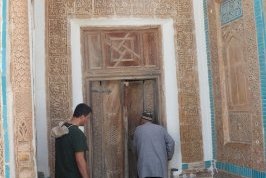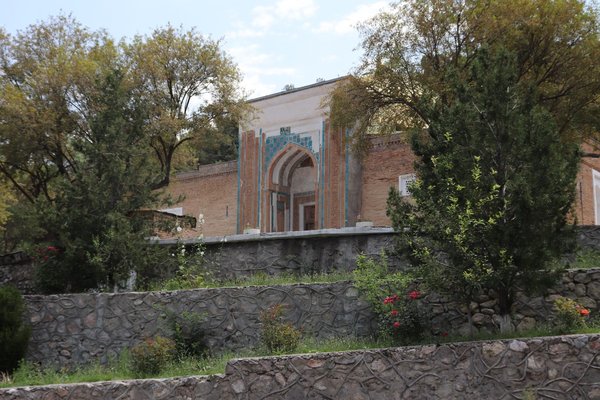Tajikistan
Mausoleum of Mukhammad Bashoro
Mausoleum of "Mukhammad Bashoro” (also included in the serial nominations “Silk Road Sites in Tajikistan” and the listed “Silk Roads: Zarafshan-Karakum Corridor”), also called Mazori Sharif by locals, is a good example of medieval Central Asian architecture, built in the 11th – 12th centuries AD.
It has a richly decorated frontal portal made of carved terracotta. It served as a mosque before being converted into a mausoleum. It is named after an important Islamic scientist, although it is not certain whether he is buried here. It serves as a local pilgrimage site.
Site Info
Official Information
- Full Name
- Mausoleum of Mukhammad Bashoro (ID: 1386)
- Country
- Tajikistan
- Status
-
On tentative list 1999
Site history
History of Mausoleum of Mukhammad Bashoro
- 1999: Added to Tentative List
- Added to tentative list
- Type
- Cultural
- Criteria
Links
- UNESCO
- whc.unesco.org
All Links
UNESCO.org
- whc.unesco.org — whc.unesco.org
Community Information
- Community Category
- Religious structure: Islamic
- Secular structure: Burial
Travel Information
Recent Connections
News
No news.
Community Reviews
Show full reviews
This propriety is 30 km east of Pendjikent in Tajikistan. As the border is now opened, it is easier to visit on a day-trip from Samarkand (e-visa necessary for TJ)
The small mausoleum of Mukhammad Bashoro was built in the XI-XII centuries both as a mausoleum and a mosque. It is one of the oldest in the region. A portal with rich decoration made of teracotta was added in 1332. Mukhammad Bashoro was a respected expert of the Khasish (the prophet’s sayings and deeds) who died in 866 might have been buried here, and a mausoleum was later built to replace a previous mosque.
It is necessary to take a taxi to get here. Local people tend to refer to this place as Mazor-i-Sharif (literally meaning the Tomb of the Holy Prince), so mention it to the taxi driver. In the town of Gusar, a signposted road goes south to the end, up to a parking area. On the left is the mausoleum, and right in front is the guardian’s house, where permission to visit should be asked (and a tip given).
The portal is a masterpiece of medieval art, richly decorated in terracotta, with writings and some rare animal figures (like fish), and entrance is by an old wooden door. The inside consist of several vaulted room, some with graves, some for prayers, all interconnected by small hallways. In the main room lies the mihrab (indicating the direction of the Kaaba) and a tall tree …
Keep reading 0 comments
